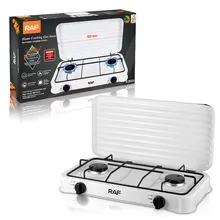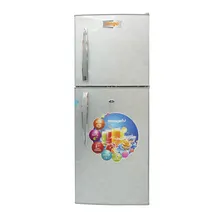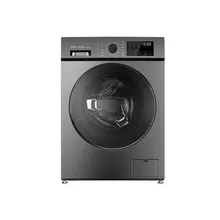The mini personal heater is a diminutive yet effective apparatus designed to deliver warmth and comfort to confined spaces. These heaters are tailored to meet the demands of heating smaller areas, rendering them perfect for individual use in a variety of environments including living rooms, bedrooms, and offices. Equipped with advanced safety features such as overheat protection, adjustable thermostats, and tip-over protection, mini personal heaters are a synthesis of safety, convenience, and adaptability.
Types and Characteristics of Mini Personal Heaters
Mini personal heaters are available in a range of models, each boasting distinct features to accommodate diverse tastes and needs. The portable heater fan is favored for its dual function, offering both heating and air circulation. For enthusiasts of cutting-edge technology, the PTC fan heater is notable for its Positive Temperature Coefficient, ensuring efficient heating with a reduced risk of overheating. Ceramic heaters are renowned for their quick heating capabilities and stable temperature control. Conversely, infrared heaters deliver direct heat, perfect for those desiring immediate warmth. Each heater variant is conceived with particular scenarios in mind, guaranteeing a suitable mini personal heater for every requirement.
Structure and Operation of Mini Personal Heaters
The architecture of a mini portable heater is intricately crafted to maximize heat dispersion while preserving a sleek profile. The internal mechanics typically consist of a heating element, a fan to disseminate heat, temperature control mechanisms, and safety sensors. The heating element, whether ceramic, infrared, or wire-based, is the heart of the heater, generating warmth. The fan then distributes this warmth evenly, while controls offer customization of heat levels, and safety sensors vigilantly guard against hazards, automatically powering down the heater to avert mishaps.
Materials and Properties in Mini Personal Heaters
The construction materials for small electric heaters are selected for their robustness, thermal endurance, and safety characteristics. ABS plastic is commonly employed for the outer shell due to its sturdiness and heat insulation, ensuring the heater's surface stays cool. Metallic elements, such as aluminum or steel, are utilized for their superior heat conduction properties, facilitating effective heat transfer. State-of-the-art materials like graphene may also be integrated for their exceptional heating efficiency and energy conservation. The selection of materials strikes a balance between safety, efficacy, and cost-efficiency, aiming to deliver optimal value for consumers.
Business Usages and Applications of Portable Electric Heaters
In the commercial sphere, portable electric room heaters fulfill a plethora of functions. Within the hospitality sector, they offer guests tailored warmth in accommodations or al fresco dining settings. Retail establishments deploy these heaters to foster a cozy atmosphere for patrons during chillier seasons. Offices utilize compact heaters to sustain conducive work temperatures, thus bolstering staff productivity. The flexibility of these heaters in diverse business environments renders them indispensable for companies seeking to provide comfort without the overhead of centralized heating systems.
Functions of Mini Personal Heaters
The fundamental role of a small room heater is to emit heat within a localized vicinity. Beyond this core purpose, numerous models are equipped with extra features such as oscillation to spread heat more uniformly, programmable timers for set-and-forget operation, and even air purification capabilities. The multifaceted nature of these heaters not only elevates the comfort level of a space but also enhances the overall health of its occupants by sustaining a clean and temperate environment.
Features and Unique Selling Points
Notable attributes of small room space heaters encompass their portability, energy efficiency, and intuitive interfaces. Certain models boast smart technology integration, enabling control through smartphone applications, positioning them as top contenders for technologically inclined consumers. The unique selling propositions of these heaters often reside in their rapid heating ability while being mindful of energy consumption, offering cost savings on electricity bills without sacrificing warmth and coziness.
Benefits and Positive Outcomes
The advantages of employing a mini personal heater are manifold. They present an economical alternative for heating, especially in areas where central heating is absent or impractical. The customization of heating ensures users can maintain a comfortable ambiance without unnecessarily warming the entire room, which is both environmentally sound and financially prudent. For those with allergies or respiratory conditions, heaters with integrated air purification can markedly ameliorate air quality, leading to improved health.
How to Use and Maintain Your Mini Personal Heater
Optimal use of a portable heater mini entails positioning it on a stable, level surface at a safe distance from combustible materials and adjusting the controls to achieve the desired warmth. Regular maintenance, such as cleaning the air intake and exhaust ports, is crucial for peak performance. When selecting a heater, factor in the size of the area and the specific features that align with your needs, like a programmable timer or remote control. For cleaning, a simple wipe with a dry cloth suffices to remove dust, and while freestanding models require no intricate setup, wall-mounted units should be professionally installed to guarantee safety.
Target Audience and Meeting Needs
The intended market for small heater room devices spans a broad spectrum, from homeowners in search of additional heating to office employees desiring personal warmth at their workstations. The design and functionalities of mini personal heaters are customized to satisfy the diverse preferences of these groups, with compact models for limited spaces, stylish options for contemporary decor, and durable units for heavy-duty use in business contexts. By discerning the desires and necessities of the target demographic, manufacturers can ensure their heaters deliver not just heat, but also ease of use, security, and a dash of elegance.
What safety features should I look for in a mini personal heater?
When it comes to heating devices, safety is paramount. A small electric heater should come with overheat protection to mitigate fire risks. Tip-over protection is another essential safeguard, ensuring the device ceases operation if it topples. Moreover, the materials used in the heater's design should be flame-retardant, adding an additional level of protection.
Can a mini personal heater be energy efficient?
Indeed, a small room heater can exemplify energy efficiency. Many units are equipped with features such as adjustable thermostats and programmable timers that aid in reducing energy consumption. Modes designed to conserve energy are also prevalent, allowing the heater to warm a space without excessive use of electricity. Opting for a heater with these functionalities can lead to substantial energy bill reductions.
How do I ensure the best performance from my portable electric heater?
To guarantee optimal performance from a portable heater honeywell or a comparable brand, it is crucial to place the heater in an appropriate spot where it is not hindered by airflow obstructions. Regular upkeep, including filter cleaning and obstruction inspections, will maintain the heater's efficiency. Additionally, employing the heater alongside proper insulation methods in your space can enhance heat retention and overall performance.










































 浙公网安备 33010002000092号
浙公网安备 33010002000092号 浙B2-20120091-4
浙B2-20120091-4